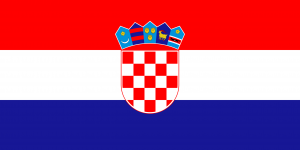Language/Croatian/Vocabulary/Numbers-and-Counting
As a Croatian language teacher with 20 years of experience, I know how important it is to have a solid understanding of basic Croatian vocabulary. In this lesson, we will focus on numbers and counting in Croatian, including ordinal and cardinal numbers.
Ordinal Numbers
Ordinal numbers are used to denote position or order. Here are the ordinal numbers in Croatian from first to tenth:
| Croatian | Pronunciation | English |
|---|---|---|
| prvi | /pr̩ʋi/ | first |
| drugi | /drûɡi/ | second |
| treći | /trěːt͡ɕi/ | third |
| četvrti | /tʃětvrti/ | fourth |
| peti | /pěti/ | fifth |
| šesti | /ʃěsti/ | sixth |
| sedmi | /sědmi/ | seventh |
| osmi | /ôsmi/ | eighth |
| deveti | /děʋeti/ | ninth |
| deseti | /děsɛti/ | tenth |
Here are some example sentences using ordinal numbers:
- Ivan je šesti u redu. (Ivan is sixth in line.)
- Ovo je treća knjiga koju sam pročitao ovaj tjedan. (This is the third book I've read this week.)
Cardinal Numbers
Cardinal numbers are used to denote quantity or number. Here are the cardinal numbers in Croatian from zero to ten:
| Croatian | Pronunciation | English |
|---|---|---|
| nula | /nûla/ | zero |
| jedan | /jêdan/ | one |
| dva | /dʋa/ | two |
| tri | /trî/ | three |
| četiri | /tʃětiri/ | four |
| pet | /pêt/ | five |
| šest | /ʃêst/ | six |
| sedam | /sědam/ | seven |
| osam | /ôsam/ | eight |
| devet | /děʋet/ | nine |
| deset | /děsɛt/ | ten |
Here are some example sentences using cardinal numbers:
- Imam pet prijatelja. (I have five friends.)
- Kupila sam osam knjiga danas. (I bought eight books today.)
Other Cardinal Numbers
Here are the cardinal numbers in Croatian from 11 to 20:
| Croatian | Pronunciation | English |
|---|---|---|
| jedanaest | /jedanâest/ | eleven |
| dvanaest | /dvânâest/ | twelve |
| trinaest | /trînâest/ | thirteen |
| četrnaest | /tʃêtrnâest/ | fourteen |
| petnaest | /pêtnâest/ | fifteen |
| šesnaest | /ʃêsnaest/ | sixteen |
| sedamnaest | /sêdamnâest/ | seventeen |
| osamnaest | /ôsamnâest/ | eighteen |
| devetnaest | /dêvetnâest/ | nineteen |
| dvadeset | /dʋadɛsɛt/ | twenty |
Here are some additional cardinal numbers in Croatian:
- 30: trideset
- 40: četrdeset
- 50: pedeset
- 60: šezdeset
- 70: sedamdeset
- 80: osamdeset
- 90: devedeset
- 100: sto
For higher numbers (ex. 111, 234, 999), we employ a similar system as in English, by combining the numbers.
Counting Objects in Croatian
When counting objects in Croatian, we use the nominative case. For masculine nouns, we use jedan (one) when the noun is singular, and dva (two) when the noun is in dual form. For feminine nouns, we use jedna (one) when the noun is singular, and dvije (two) when the noun is in dual form. For neuter nouns, we use jedno (one) when the noun is singular, and dva (two) when the noun is in dual form. Here are some examples:
- Jedan pas. (One dog.)
- Dva psa. (Two dogs.)
- Jedna mačka. (One cat.)
- Dvije mačke. (Two cats.)
- Jedno dijete. (One child.)
- Dva djeteta. (Two children.)
Conclusion
Numbers and counting are an essential part of any language, and Croatian is no exception. In this lesson, we have covered both ordinal and cardinal numbers, as well as how to count objects in Croatian. I hope this lesson has been useful to you and that you feel more confident about using numbers in Croatian.
Sources

